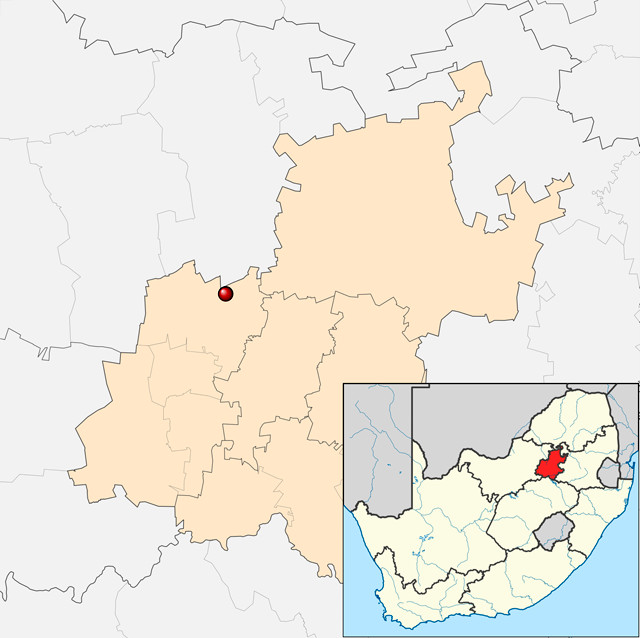
by Mary Caperton Morton Wednesday, August 17, 2016

Location of Rising Star Cave in Guateng Province. Inset map: Location of Guateng Province in South Africa. Credit: Animalparty, CC BY-SA 4.0.
In 2013, cave explorers discovered a trove of human-like fossils in the Rising Star Cave in South Africa. Since then, more than 1,500 fossils belonging to at least 15 individuals have been excavated from the site. The fossils display a mishmash of primitive and more advanced features that seem to place it somewhere between Australopithecus and early Homo species, such as a small cranial capacity closer to Australopiths, but with finer facial features, more like Homo.
The combination of traits was unique enough that the research team, led by paleoanthropologist Lee Berger at the University of the Witwatersrand in Johannesburg, South Africa, declared the specimens to be a new species: Homo naledi. However, the preservation of the bones has made dating the specimens difficult; a lack of volcanic ash or calcite flowstone near the fossils has made establishing an age range by traditional dating methods impossible, leading some paleoanthropologists to suggest a moratorium on declaring a new species until an age can be established.
Homo naledi may be an example of a small, isolated population of early humans who may have branched off from other species of Homo for some period of time before coming back into breeding contact with other early species, says Rick Potts, director of the Human Origins Program at the Smithsonian National Museum of Natural History. “In Africa, grasslands, forests and woodlands were expanding and contracting, coalescing and fragmenting apart. It was the perfect arena for gene pools becoming isolated from each other and then coming back in contact after thousands of years in a beautifully creative process of evolution and speciation,” Potts says.
Without a date for the fossils, however, it’s hard to know where Homo naledi fits. “This could have been one of those [evolutionary] experiments that went nowhere and ended up being an isolated population that persisted for some time before dying out in favor of other populations,” Potts says.
Berger and colleagues are currently trying several new methods to date the fossils, hoping to publish results in 2017. In the meantime, in July, a statistical approach using fine measurements of the skulls and teeth published in the Journal of Human Evolution by paleoanthropologist Mana Dembo of Simon Fraser University in Burnaby, British Columbia, suggests the fossils could be much younger: less than a million years old.
© 2008-2021. All rights reserved. Any copying, redistribution or retransmission of any of the contents of this service without the expressed written permission of the American Geosciences Institute is expressly prohibited. Click here for all copyright requests.